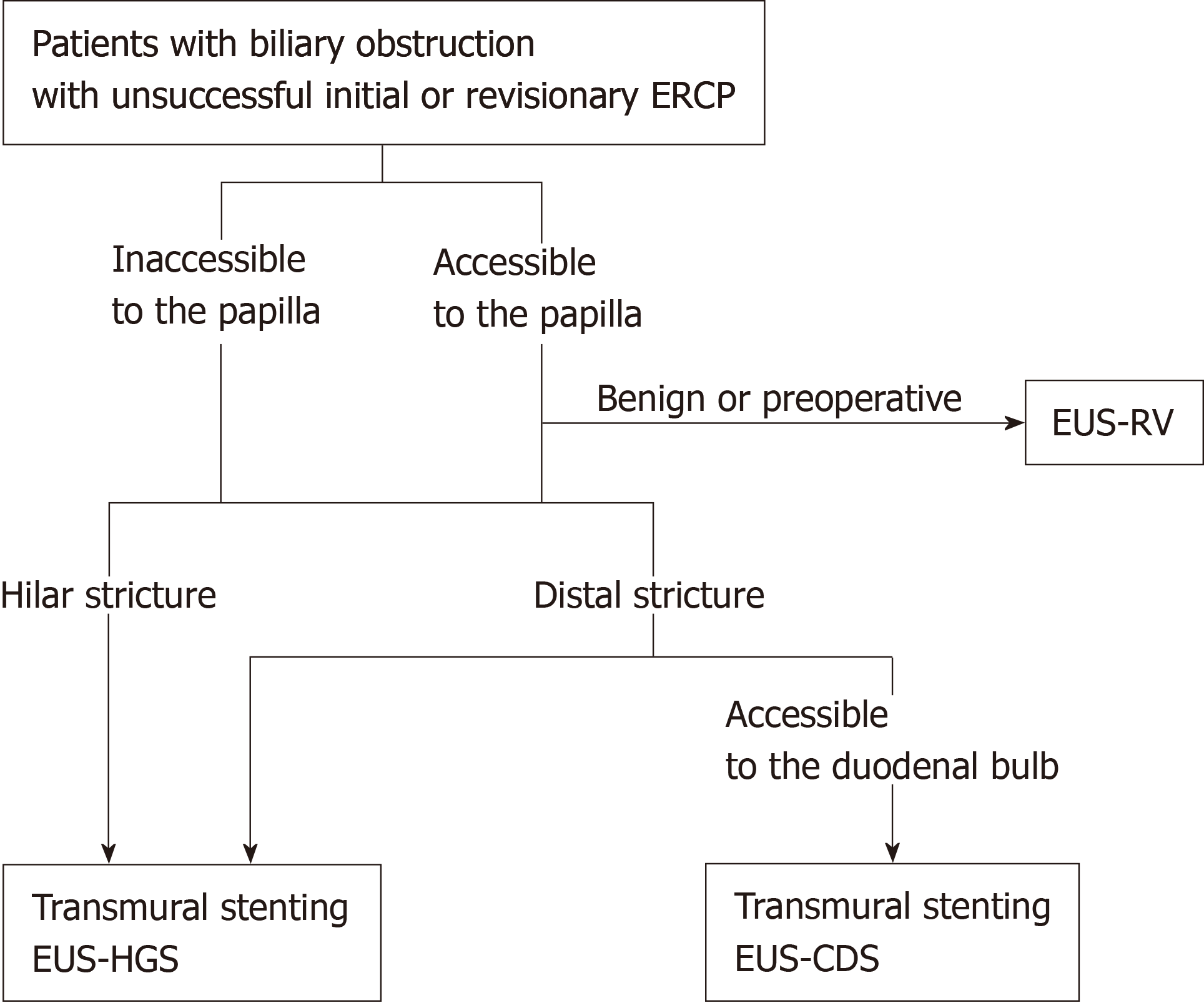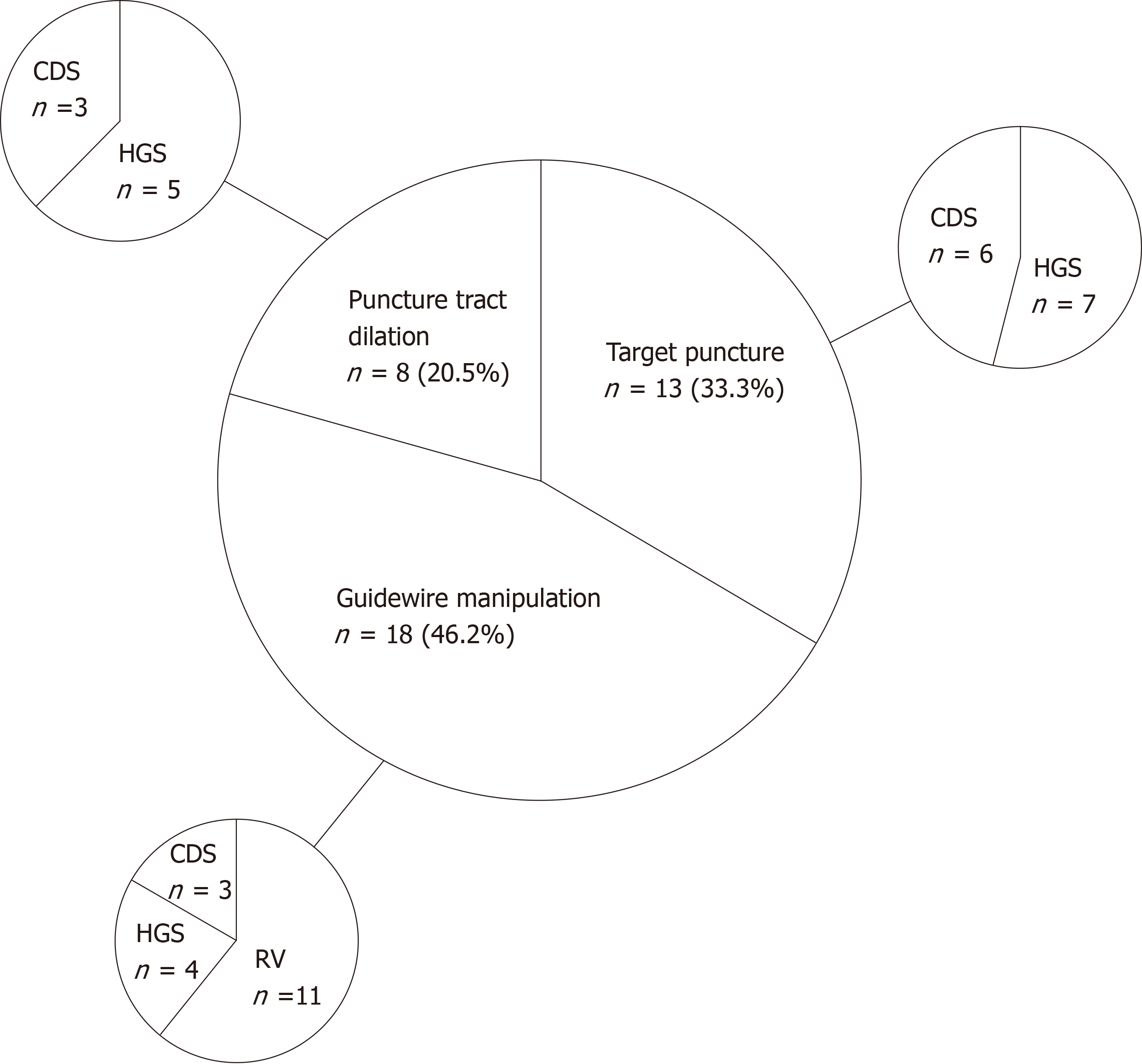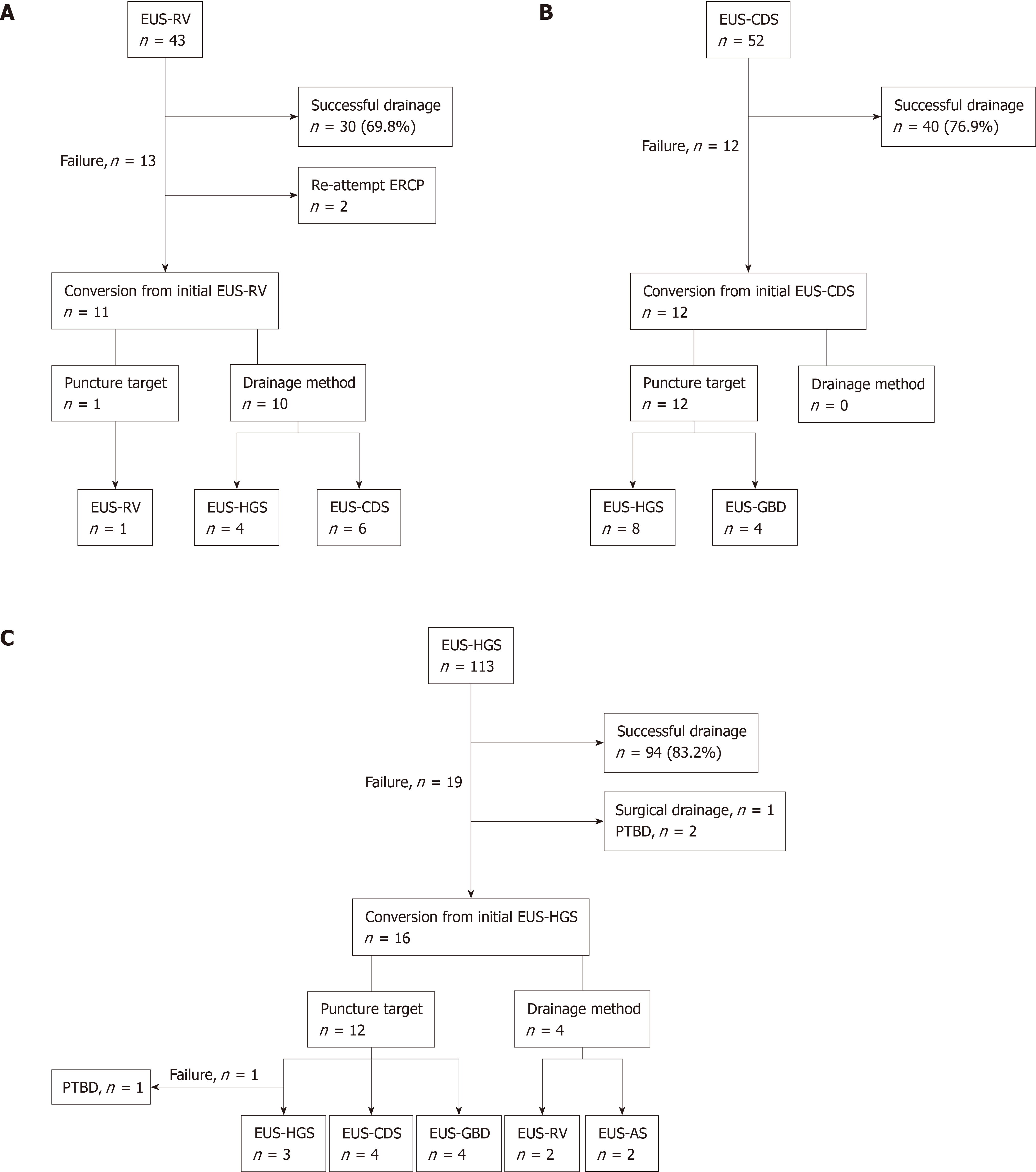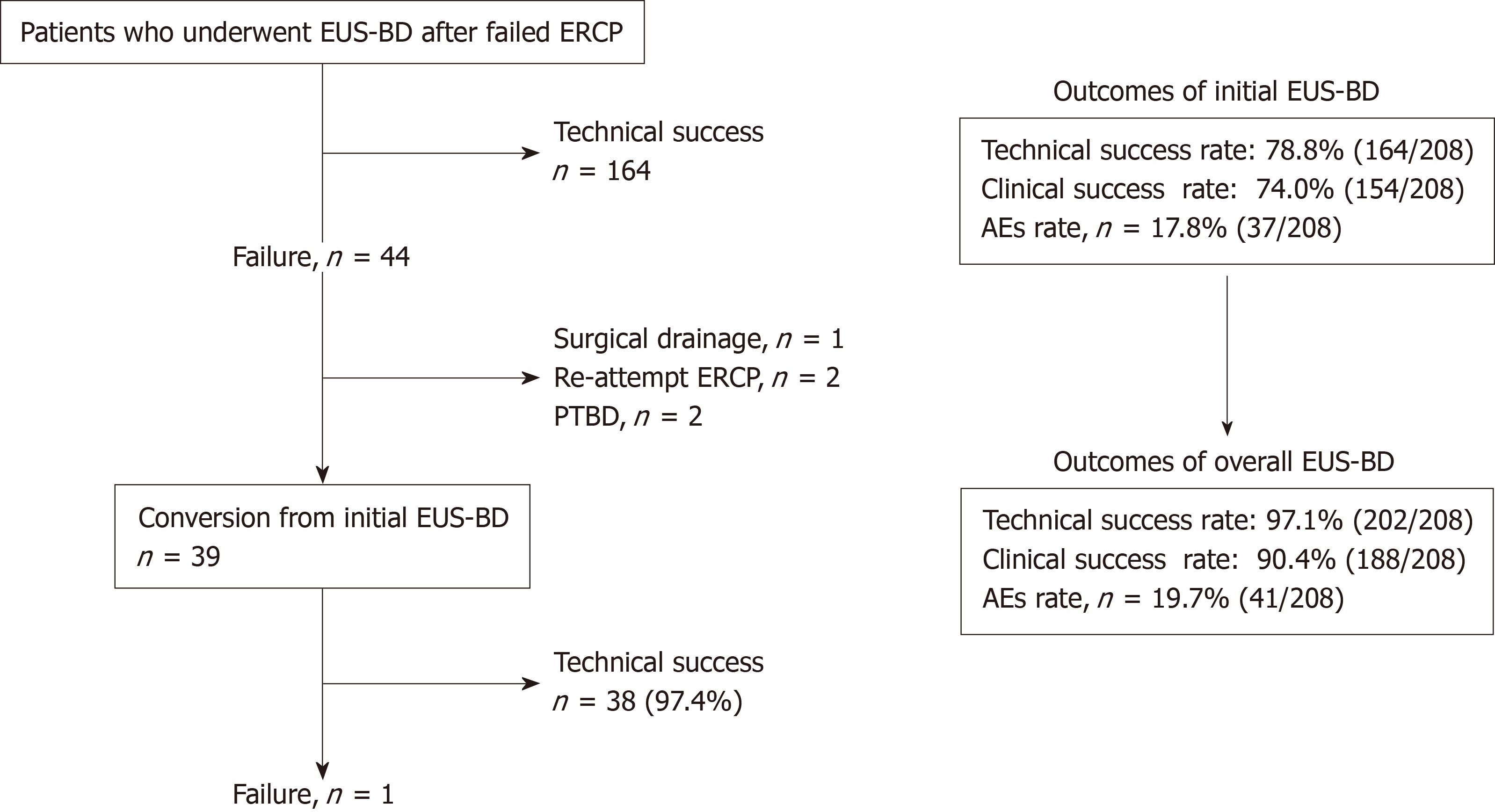Copyright
©The Author(s) 2020.
World J Gastroenterol. Mar 7, 2020; 26(9): 947-959
Published online Mar 7, 2020. doi: 10.3748/wjg.v26.i9.947
Published online Mar 7, 2020. doi: 10.3748/wjg.v26.i9.947
Figure 1 Treatment algorithm for initial endoscopic ultrasound-guided biliary drainage in this study.
ERCP: Endoscopic retrograde cholangiopancreatography; EUS-RV: EUS-guided rendezvous technique; EUS-HGS: EUS-guided hepaticogastrostomy; EUS-CDS: EUS-guided choledochoduodenostomy.
Figure 2 Reasons for difficulties in initial endoscopic ultrasound-guided biliary drainage.
CDS: Choledochoduodenostomy; HGS: Hepaticogastrostomy; RV: Rendezvous technique.
Figure 3 Technical outcomes of each initial endoscopic ultrasound-guided biliary drainage technique in this study.
A: EUS-guided rendezvous technique; B: EUS-guided choledochoduodenostomy; C: EUS-guided hepaticogastrostomy. EUS-RV: EUS-guided rendezvous technique; EUS-CDS: EUS-guided choledochoduodenostomy; EUS-HGS: EUS-guided hepaticogastrostomy; EUS-AS: EUS-guided antegrade stenting; PTBD: Percutaneous transhepatic biliary drainage.
Figure 4 Technical and clinical outcomes of endoscopic ultrasound-guided biliary drainage in all 208 cases.
Treatment method conversion for unsuccessful initial EUS-BD cases improved both technical and clinical success rates. EUS-BD: EUS-guided biliary drainage; ERCP: Endoscopic retrograde cholangiopancreatography; PTBD: Percutaneous transhepatic biliary drainage; AE: Adverse event.
- Citation: Minaga K, Takenaka M, Yamao K, Kamata K, Omoto S, Nakai A, Yamazaki T, Okamoto A, Ishikawa R, Yoshikawa T, Chiba Y, Watanabe T, Kudo M. Clinical utility of treatment method conversion during single-session endoscopic ultrasound-guided biliary drainage. World J Gastroenterol 2020; 26(9): 947-959
- URL: https://www.wjgnet.com/1007-9327/full/v26/i9/947.htm
- DOI: https://dx.doi.org/10.3748/wjg.v26.i9.947












